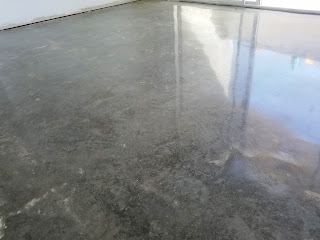Removing Stains From Marble
Marble is a common material for kitchen countertops and bathroom surfaces. It is a material of choice for many homes since it is affordable while giving your home an expensive and elegant look.
However, just like other sedimentary rocks, marble tends to be soft and porous, thus, tends to stain easily. If you have stains on your marble floor or countertop, don’t panic.
These stains are easy to remove using a homemade poultice.
The materials used to form the dressing vary depending on the stain.
Marble Stain Removal
Identifying the nature of the stain on the marble surface is the key to successful removal. If unsure about the stain, you can try to detect it by asking yourself the following questions. Where is it located? Is it near a food service area? Is it near cosmetics?
What is the pattern? Most surface stains on marble can be removed using appropriate cleaning products. The following are some of the stains you will encounter on marble and how to deal with them.
Oil-based Stains
These include cooking oil, milk, tar, cosmetics, and grease. Oil-based stains usually darken the marble. Most must be chemically dissolved to ensure the source of the stain is successfully rinsed.Clean the affected surface gently using a soft, liquid cleanser mixed with bleach. You can also use a household detergent, mineral spirits, acetone, or ammonia.
Organic Stains
Organic stains include tobacco, coffee, fruit juices, bark, bird droppings, urine, leaves, paper, tea, and coffee. These might leave a pinkish-brown color on the surface. Most of them disappear after removing the source of the stain.On outdoor marble surfaces, average rain and sun action will bleach out the colors once the stain is removed. If the stains are indoors, clean the surface with 12% hydrogen peroxide mixed with a few drops of ammonia.
Water Spots and Rings
Water spots and rings occur due to the surface accumulation of hard water. They are the easiest to clean. Furthermore, unlike other marble stains, they don’t penetrate beyond the surface. You must buff them with dry steel wool and then wipe the surface. |
Metal Stains
These are left behind by rust, iron, copper, and bronze. Rust or iron stains have a brown to orange color.They usually assume the shape of staining material like bolts, screws, nails, flower pots, metal furniture, and cans.
Bronze and copper stains appear as muddy-brown or green. They occur from a motion on embedded or nearby copper, bronze, or brass items.
Metal stains must be removed using a poultice. Rusty and deep-seated stains are pretty challenging to remove. In fact, they might leave a permanent color on the stone.
A poultice stain remover for marble is a chemical or liquid cleaner combined with a white absorbent material in the form of a paste. The poultice is then spread over the affected area to form a thickness of approximately ¼ inch using a wood or plastic spatula. This poultice is covered with plastic and left on the surface for 24 to 48 hours to work.
The chemical or liquid cleaner will draw the stain out, which is soaked by the absorbent material. For thorough removal of a stain, poultice procedures might have to be repeated.
Etch Marks
Etch marks result from acid stains remaining on the surface for an extended period. Some materials tend to etch the finish without leaving a color. However, others will both stain and etch. After removal of the stain, wet the stone’s surface using clear water and then sprinkle some marble polishing powder.Preparing a Poultice
A poultice stain remover for marble is a chemical or liquid cleaner combined with a white absorbent material in the form of a paste. The poultice is then spread over the affected area to form a thickness of approximately ¼ inch using a wood or plastic spatula. This poultice is covered with plastic and left on the surface for 24 to 48 hours to work.
The chemical or liquid cleaner will draw the stain out, which is soaked by the absorbent material. For thorough removal of a stain, poultice procedures might have to be repeated.
However, some stains may never be eradicated, regardless of how often you repeat the process.
Poultice Materials
Some materials used to form a poultice include whiting, fuller’s earth, kaolin, powdered chalk, white molding plaster, and diatomaceous earth.In most situations, an average of a pound of the prepared poultice material can cover one square foot. Never use iron-type clays like Fuller’s earth or Whiting when dealing with acid chemicals.
This reaction usually cancels out the ability of the poultice. You can also prepare a poultice using white paper towels, white cotton balls, or gauze pads.
Bottom Line
Stain removal on marble surfaces is easy as long as you have the appropriate poultice. However, some stains tend to be stubborn, especially iron stains.
Bottom Line
Stain removal on marble surfaces is easy as long as you have the appropriate poultice. However, some stains tend to be stubborn, especially iron stains.
If you face any challenges when removing any form of stain, it is always advisable to seek the help of professionals. They will get the job done perfectly within a short time.





.jpg)